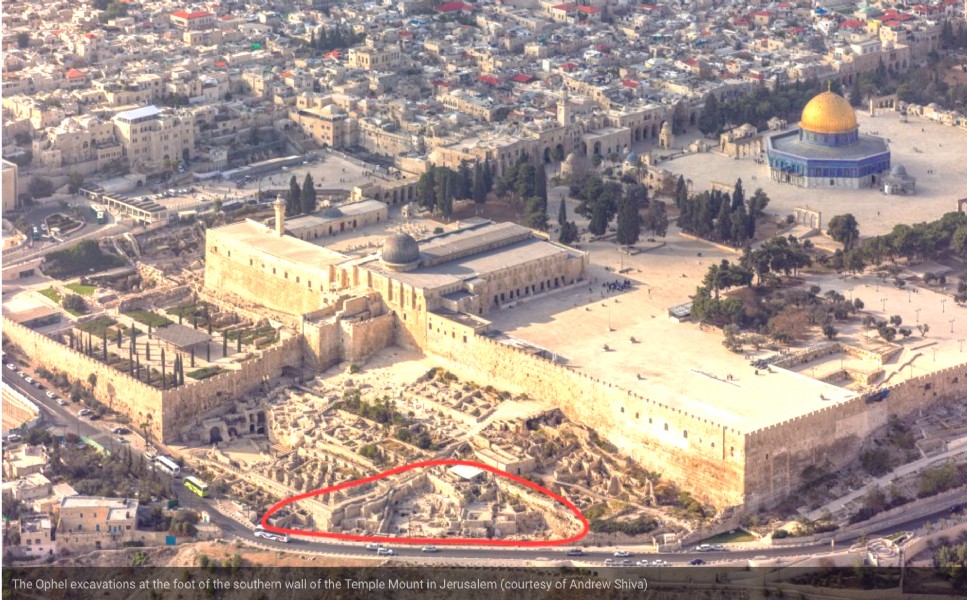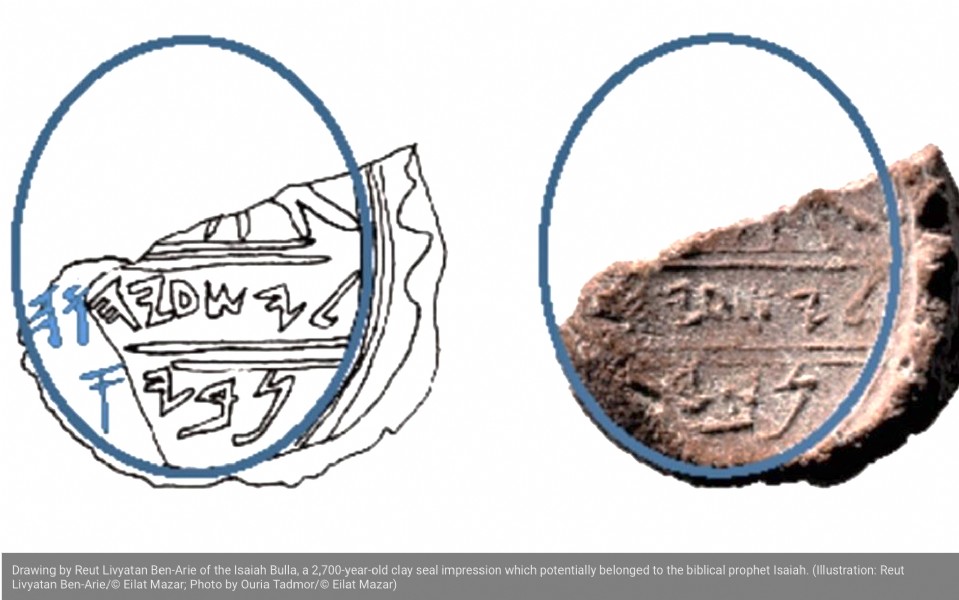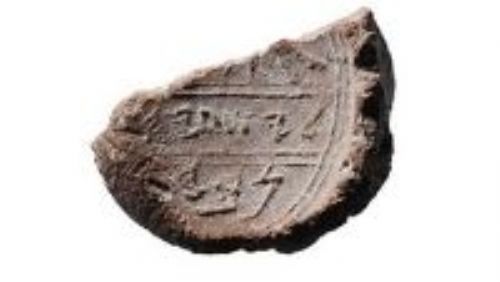Two years ago, archaeologist Eilat Mazar was working near the Temple Mount in Jerusalem, sifting for finds in an area called the Ophel which dates to the time of Israel's monarchy in the 8th century BC. She discovered two amazing bullae – baked clay impressions used to officially seal the owner's written communication. One bulla reads "Belonging to Hezekiah (son of) Ahaz, king of Judah" [1]. Most archeological scholars don't doubt this belongs to the biblical King Hezekiah.
It's the second bulla that's caused quite the stir; for in the same layer merely a few feet away, the other seal reads "Belonging to Isaiah the prophet"! Here's where the debate begins – the impression is partially damaged, and the last letter of the word "prophet" is missing. Apparently, that's enough for these pottery scientists to throw on the brakes lest a divine foot come into the door of their beloved profession. They declare, "we cannot say with absolute certainty this seal impression is Isaiah's."
Make no mistake - we can be certain that (i) the seal is authentic, having been discovered under a controlled excavation in a likely area with similar finds all dating to the same era; (ii) the impression was in fact Isaiah's; and (iii) it was discovered in an administrative area of Jerusalem in an area belong to one of the king's two palaces. [2] Biblically speaking, we know that Isaiah and Hezekiah were often spoken of together throughout scripture (2 Kings chapters 19-20, Isaiah chapters 37-39).
Why would historical archaeologists not fully embrace this find? While the bulla is not divinely inspired, yet it bears record to a divinely called prophet, whose name is placed in God's Word through inspiration. Even that tiny bit of light – the phrase, Isaiah the prophet – makes them shudder. This is the condemnation, that light is come into the world, and men loved darkness rather than light, because their deeds were evil. For every one that doeth evil hateth the light, neither cometh to the light, lest his deeds should be reproved.

The Ophel excavation at the foot of the southern wall of the Temple Mount in Jerusalem. [3]

Drawing deciphering the Isaiah Bulla, a 2,700-year-old clay seal impression. [4]
Though we walk by faith and not by sight, Christians ought to expect to find evidence of God's historical presence.
[1] R. Ngo, "King Hezekiah in the Bible: Royal Seal of King Hezekiah Comes to Light," Bible History Daily (BAS blog), December 3, 2015.
[2] J. Daniel Hays, A Christian's Guide To Evidence For The Bible, Baker Books, Grand Rapids MI, 2020, pg. 48.
[3] Source: https://www.timesofisrael.com/in-find-of-biblical-proportions-proof-of-prophet-isaiah-believed-unearthed/
[4] Ibid.
Like this? Consider sharing it to Facebook by clicking the linked icon below.

